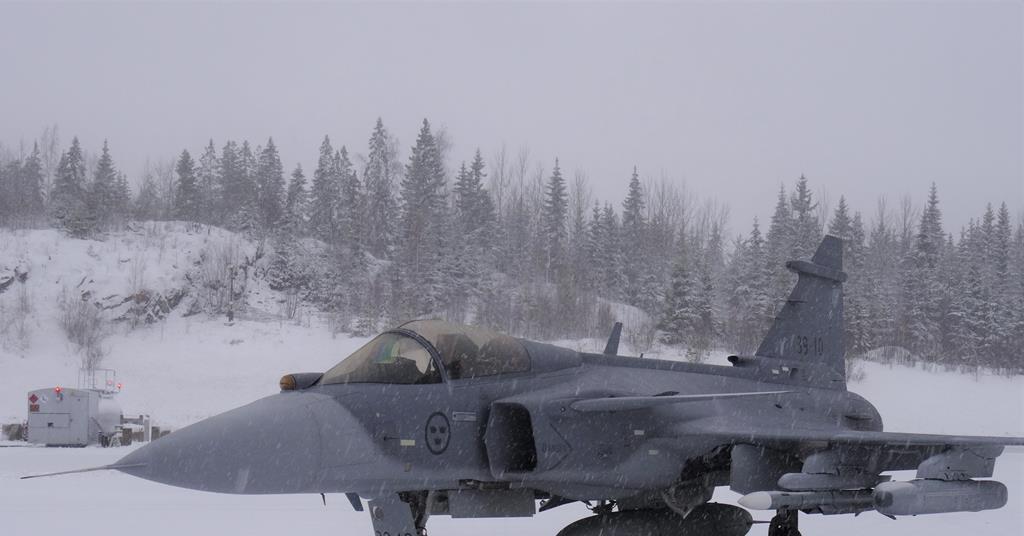Candidate number three – Saab’s Gripen E – late last month arrived at the Finnish air force’s Pirkkala air base, before Helsinki received updated request for proposal responses from the Swedish firm and its rivals on 31 January. The deployment marked the first overseas commitment made using the new-generation model.
Saab sent its newest Gripen E test aircraft, 39-10, to the Satakunta Air Command facility on 29 January, with its dedicated two-seat sensor development platform 39-7 following two days later. The pair were involved in evaluations to test the type’s suitability as a potential successor to Finland’s Boeing F/A-18C/Ds.
***
Uniquely among the HX candidates, Saab’s proposal to Helsinki includes GlobalEye surveillance platforms, to be adapted from Bombardier’s Global 6500 long-range business jet.
Finnish personnel flew aboard a Global 6000-based example from Saab’s Linkoping site in Sweden in support of the recent evaluation. The aircraft involved is among those nearing delivery to launch customer the United Arab Emirates.
Equipped with Saab’s Erieye ER airborne early warning radar, a Leonardo Seaspray maritime radar, electro-optical/infrared sensor and electronic warfare (EW) equipment, the heavily modified is capable of simultaneously monitoring airborne, naval and land threats.
Carp notes that GlobalEye’s long-range performance could provide Finland with an extra 20min warning of an attack while acting as a “flying C2 [command and control] centre”. The aircraft would also enable it to use its Gripen Es in the most efficient manner when combat air patrol duties are required. “We hope the Finnish air force will appreciate this force multiplier,” he adds.
***
Lockheed Martin’s F-35A will follow next, with four of the type having departed Luke AFB in Arizona on 4 February. The Lightning II has an evaluation window within the period 7-17 February.
The F/A-18E/F Super Hornet will be the last to visit, with Washington having given its initial approval for Helsinki to also be offered the EA-18G Growler electronic attack variant. The HX Contest evaluations will wrap up with the Boeing type on 26 February.
The defence ministry has requested that contenders do not reveal the specifics of its technical evaluation, but has previously outlined a need to assess “the performance of electro-optical systems, but possibly other active and passive systems” under Finnish winter conditions.
Assessment activities are split across five areas: counter-air; -land; and –sea tasks; long-range strike; and ISTAR (intelligence, surveillance, target acquisition and reconnaissance) and C2.
***
Skogberg notes that the Gripen E will achieve full operational capability in 2023, following the completion of operational testing by Sweden and Brazil. Noting that its 2019 outline “could give some hints” about the capability now on offer, he notes: “we can supply a substantial number of fighters.”
According to Skoberg, offering a subset of Gripen Fs means Saab has “a very sophisticated and powerful approach when it comes to EW in the HX programme.” And he adds: “If it weren’t for the cost-efficiency of the Gripen E, we wouldn’t have GlobalEye in there.”
Its pitch also includes initial in-service support until 2030, plus a “substantial weapons package”, simulators, initial training and missio
n and ground equipment.
Finland has reached the mid-way point in its HX Challenge process: an in-country evaluation of the five types on offer to meet its future fighter requirement.

www.flightglobal.com







